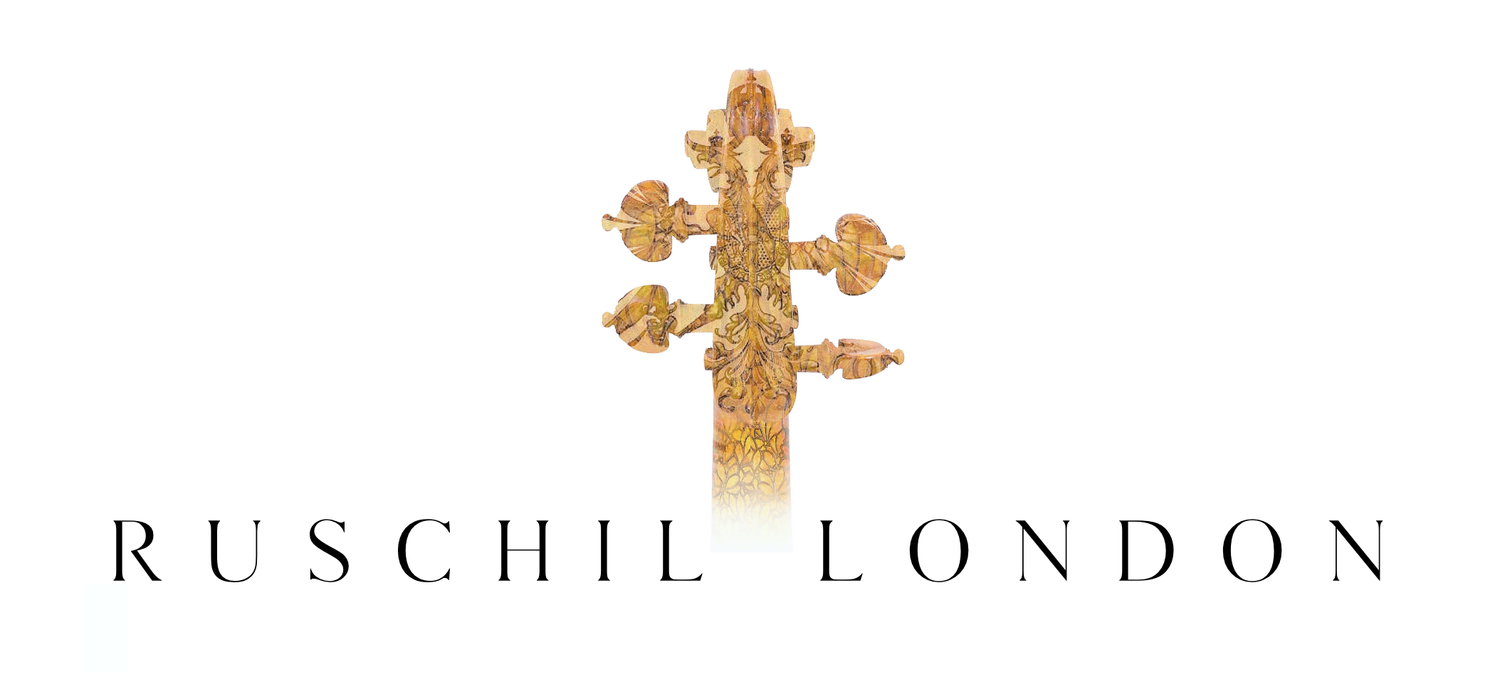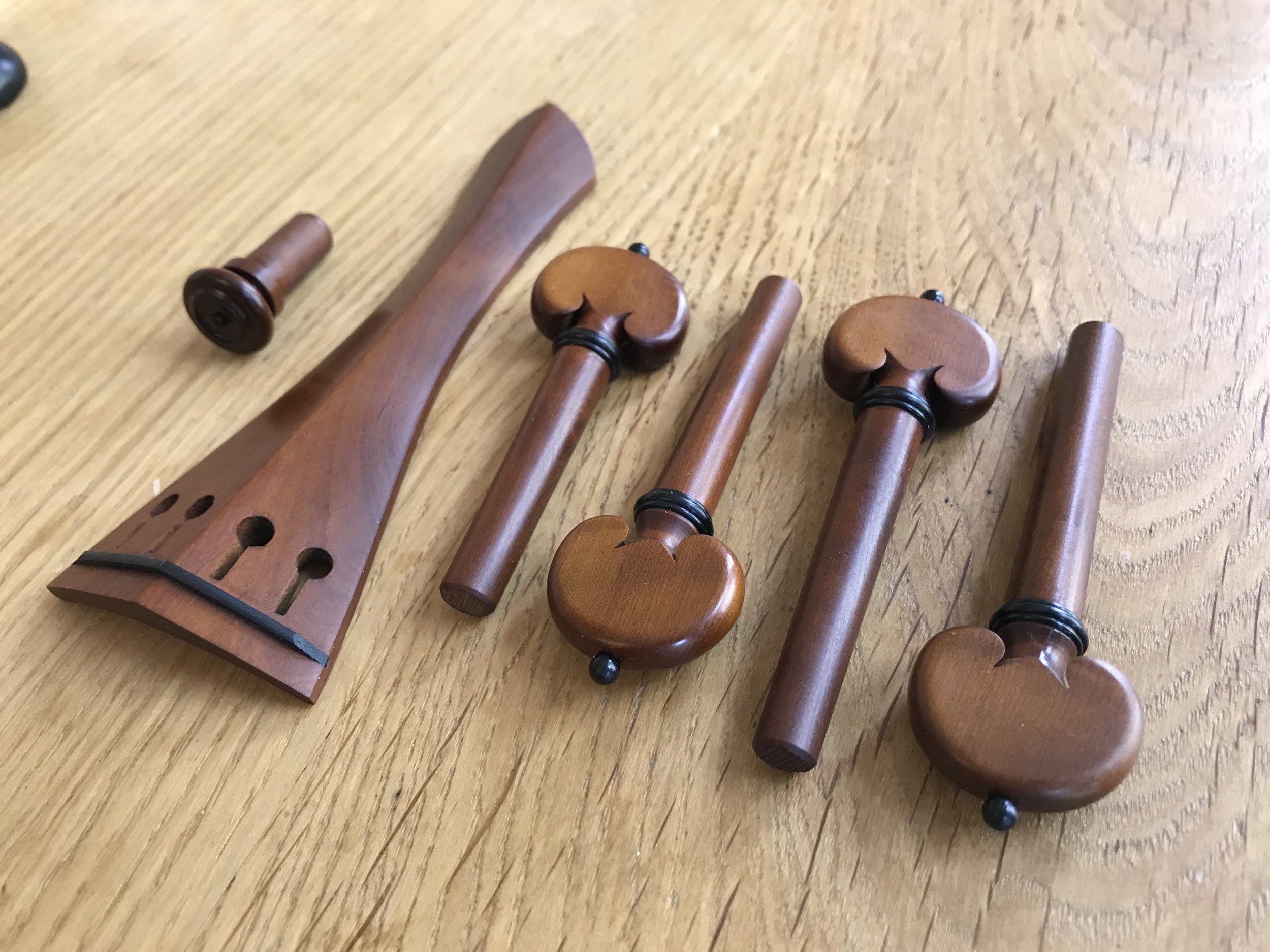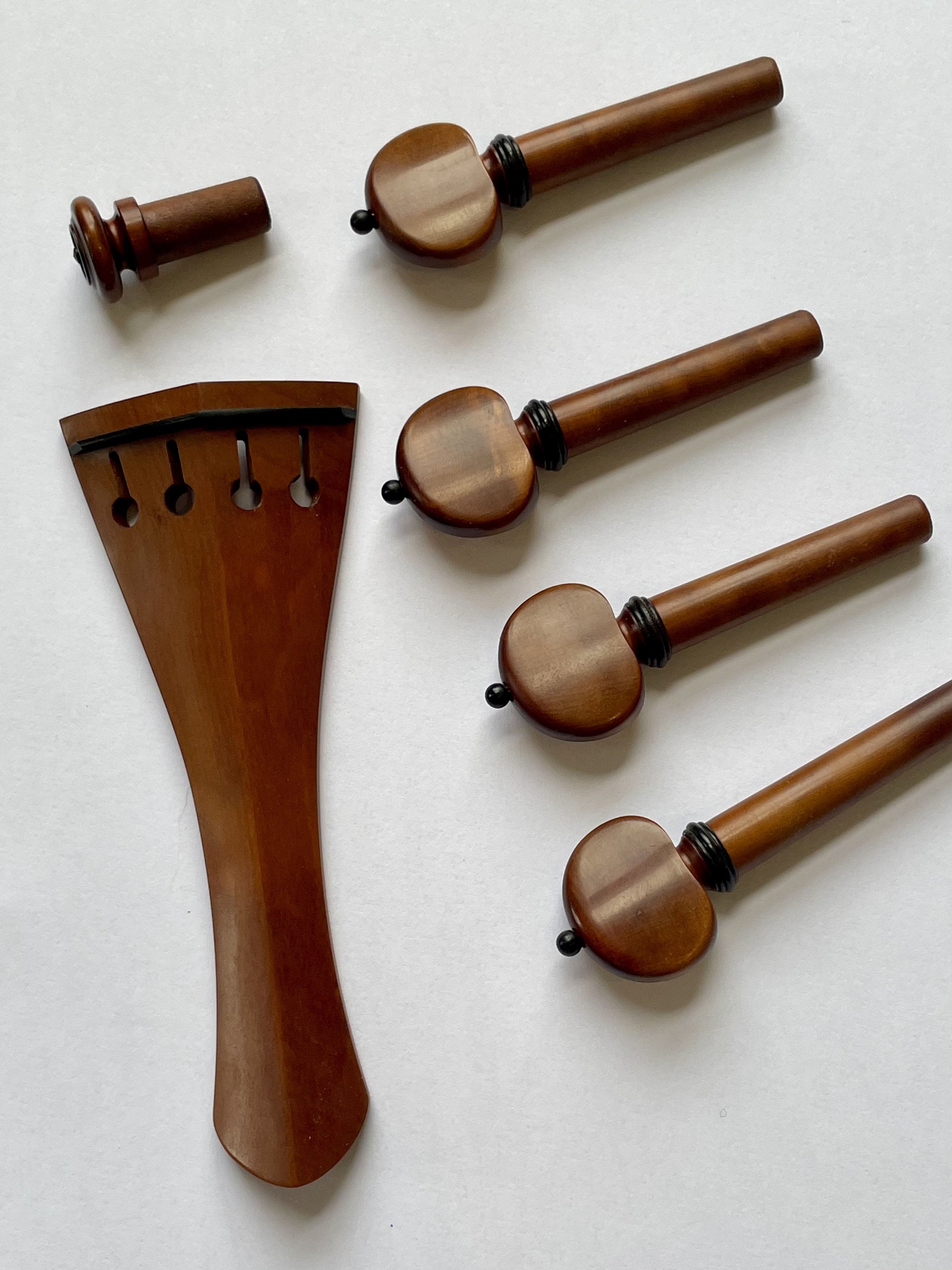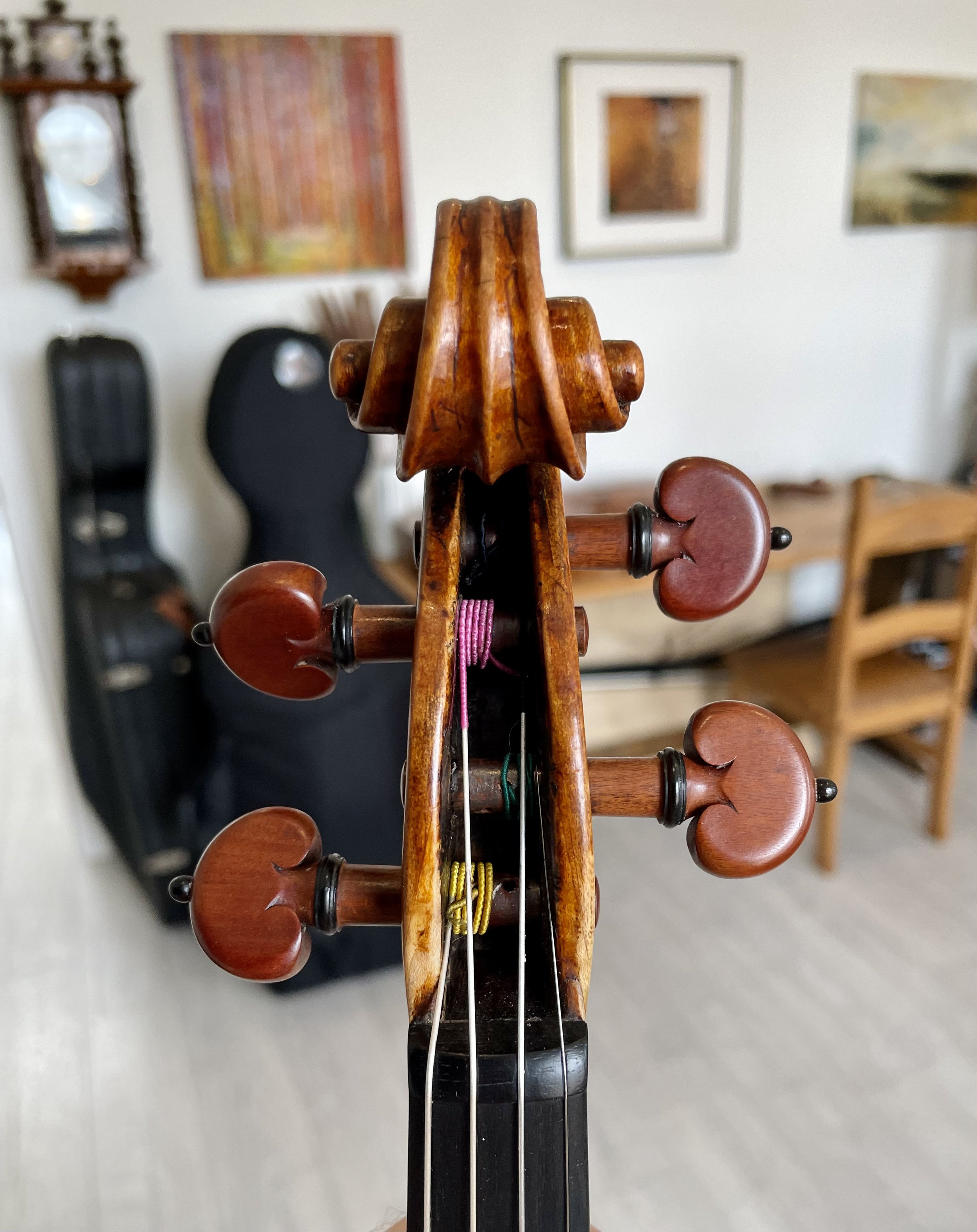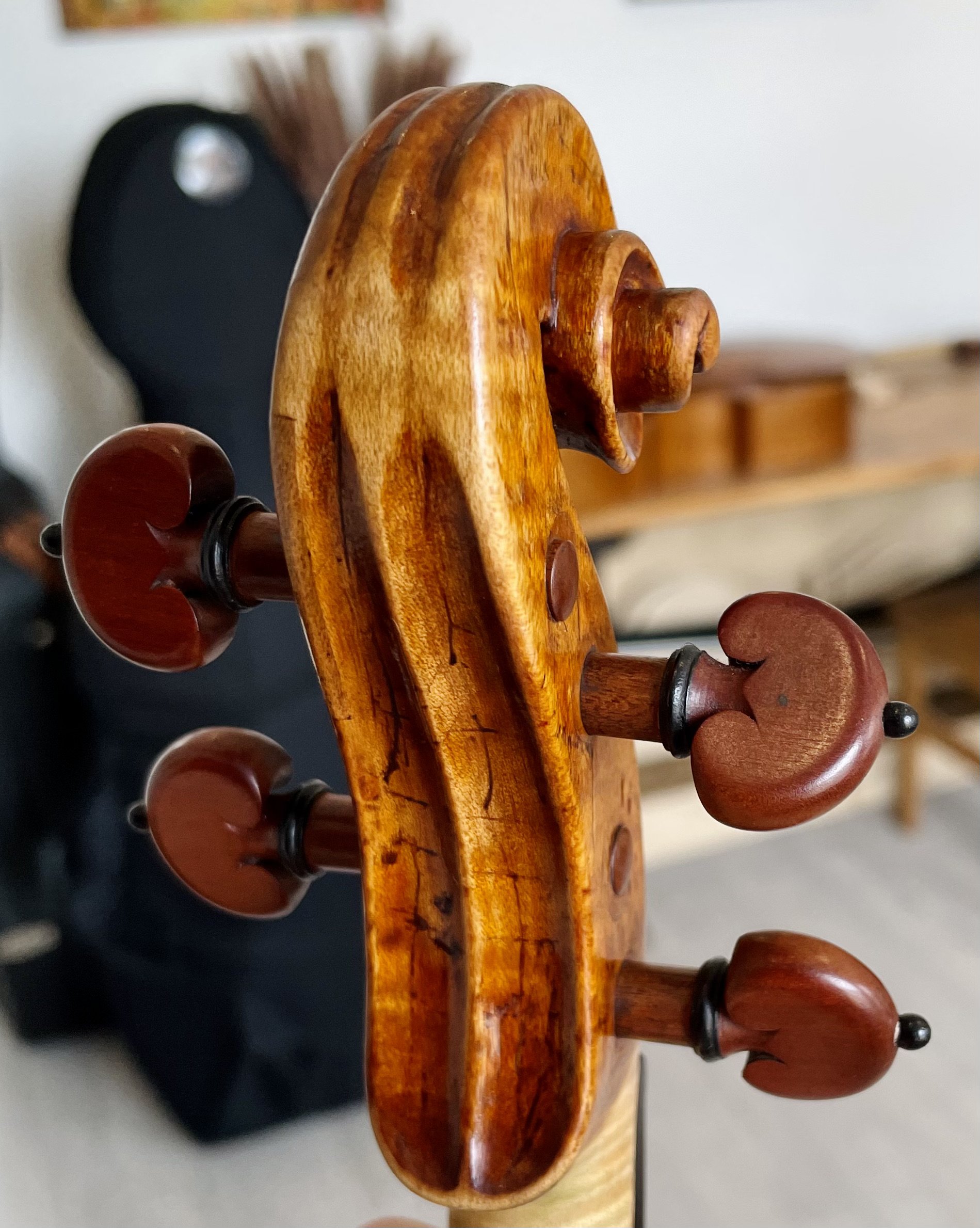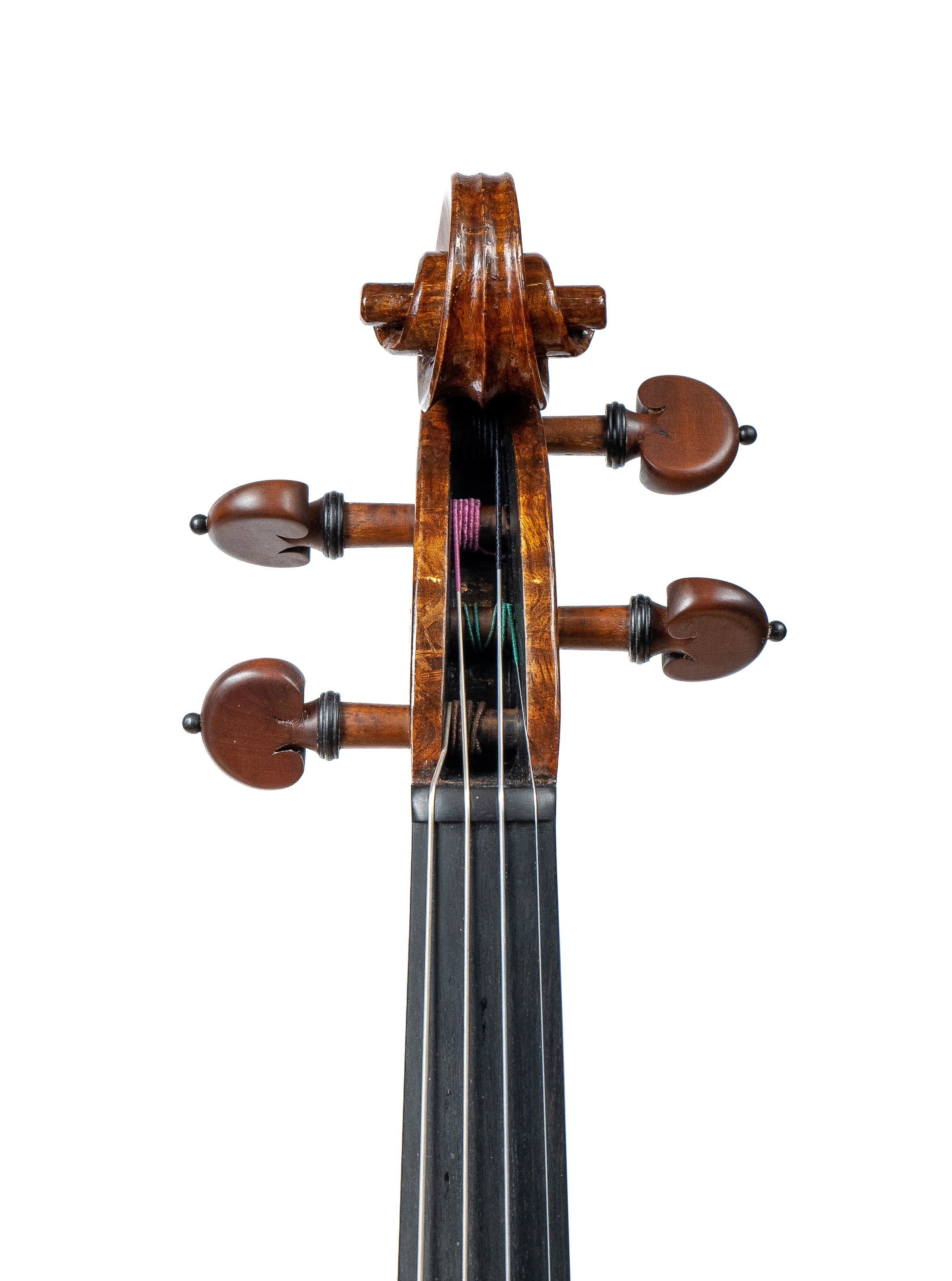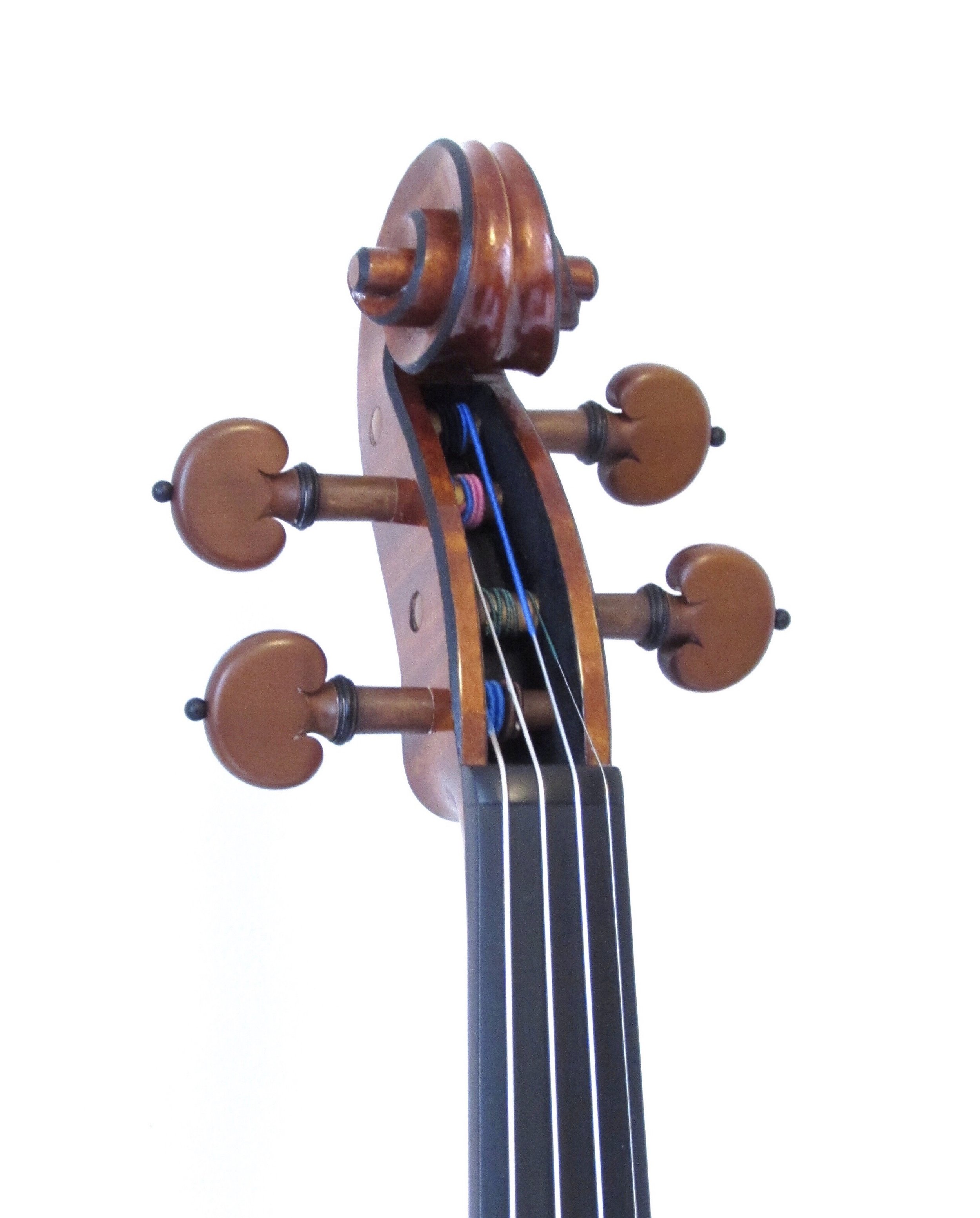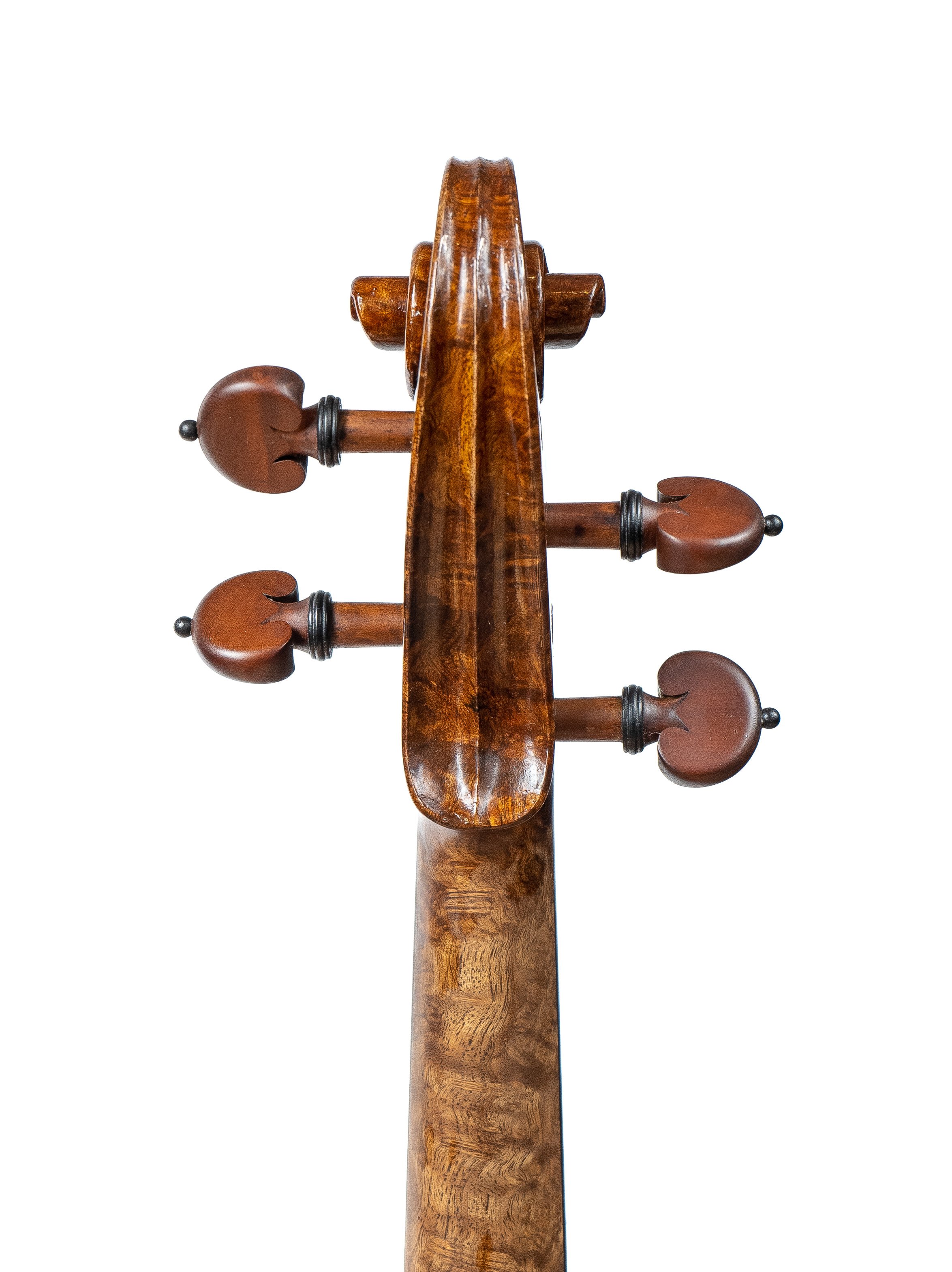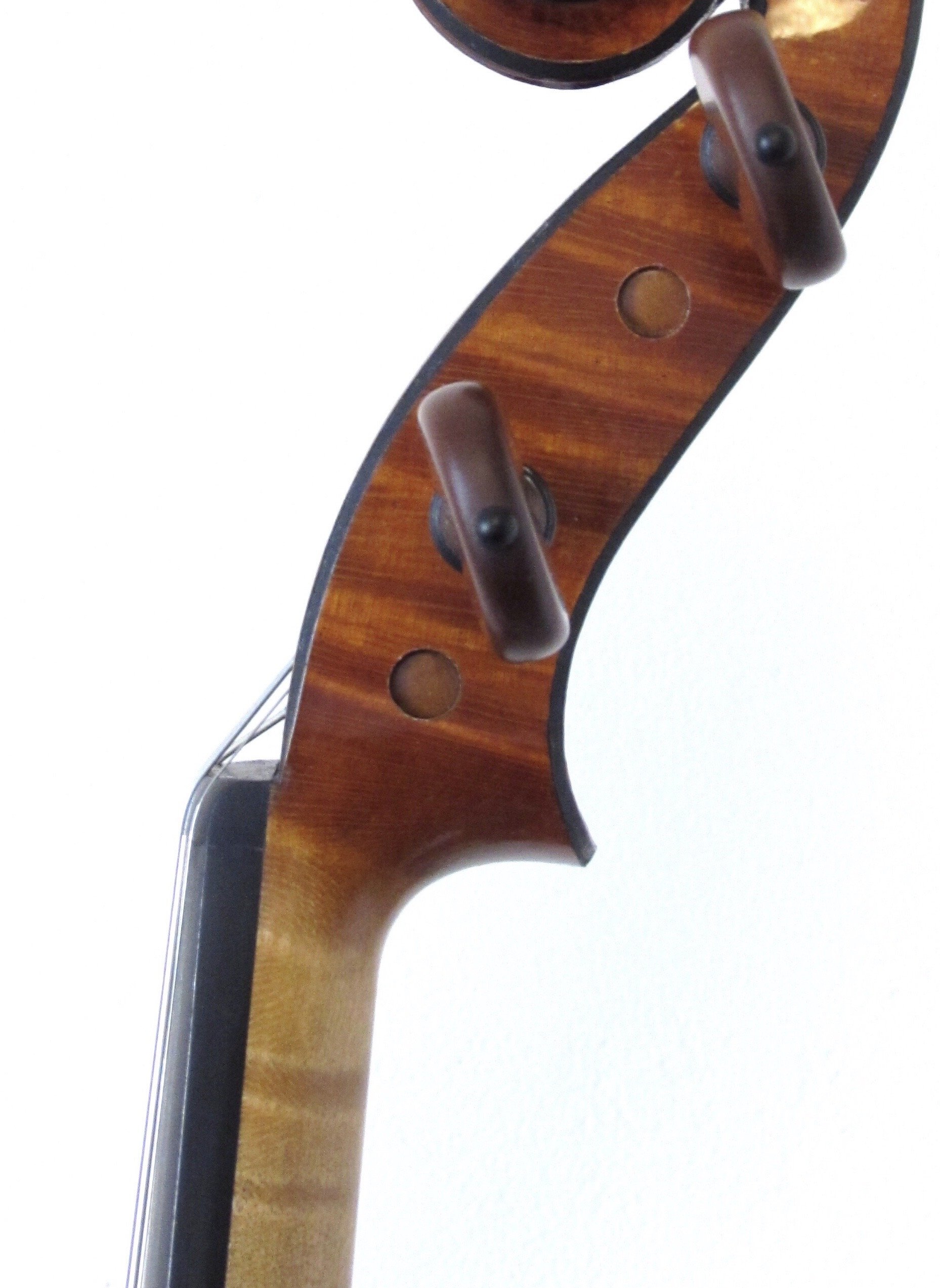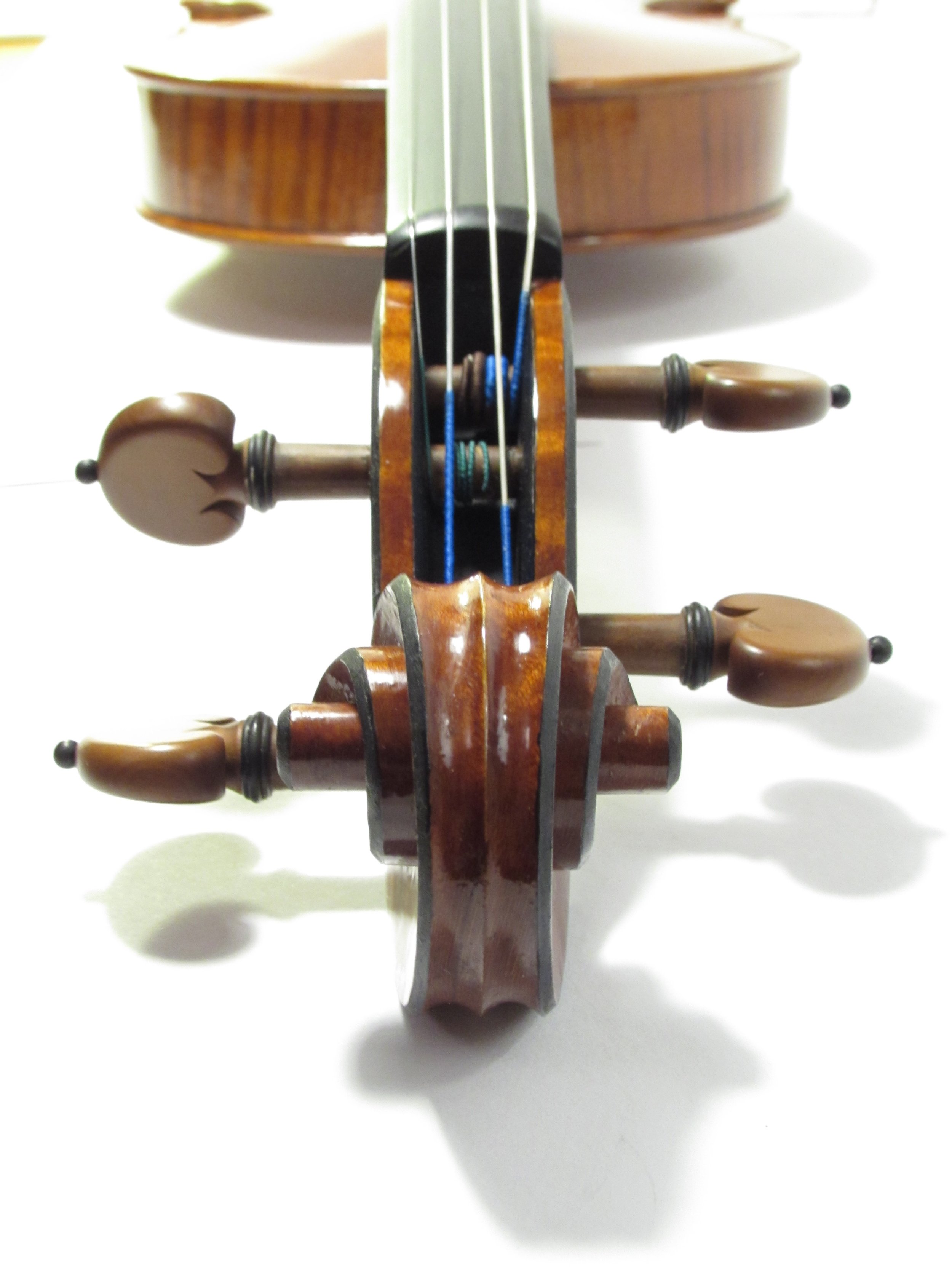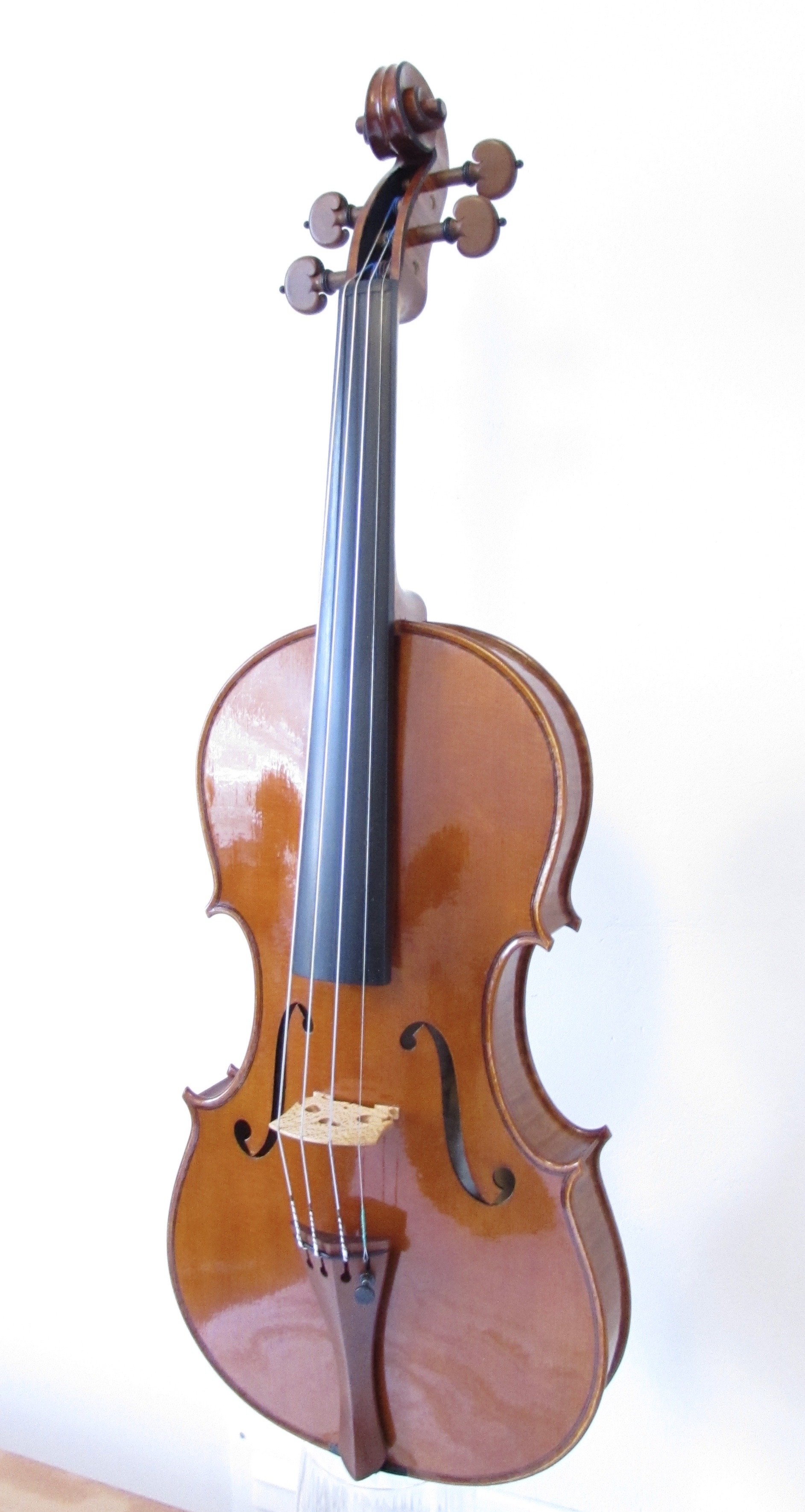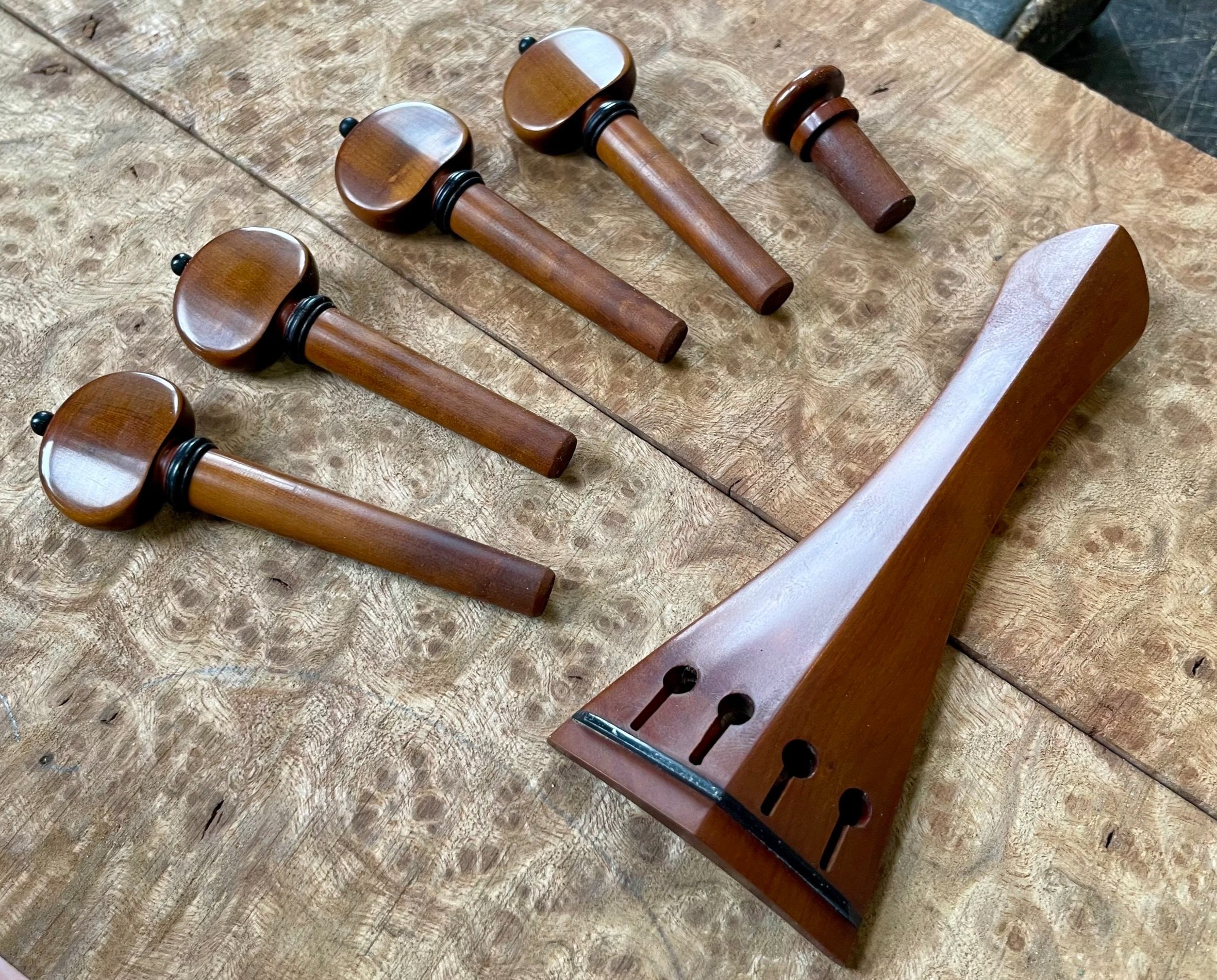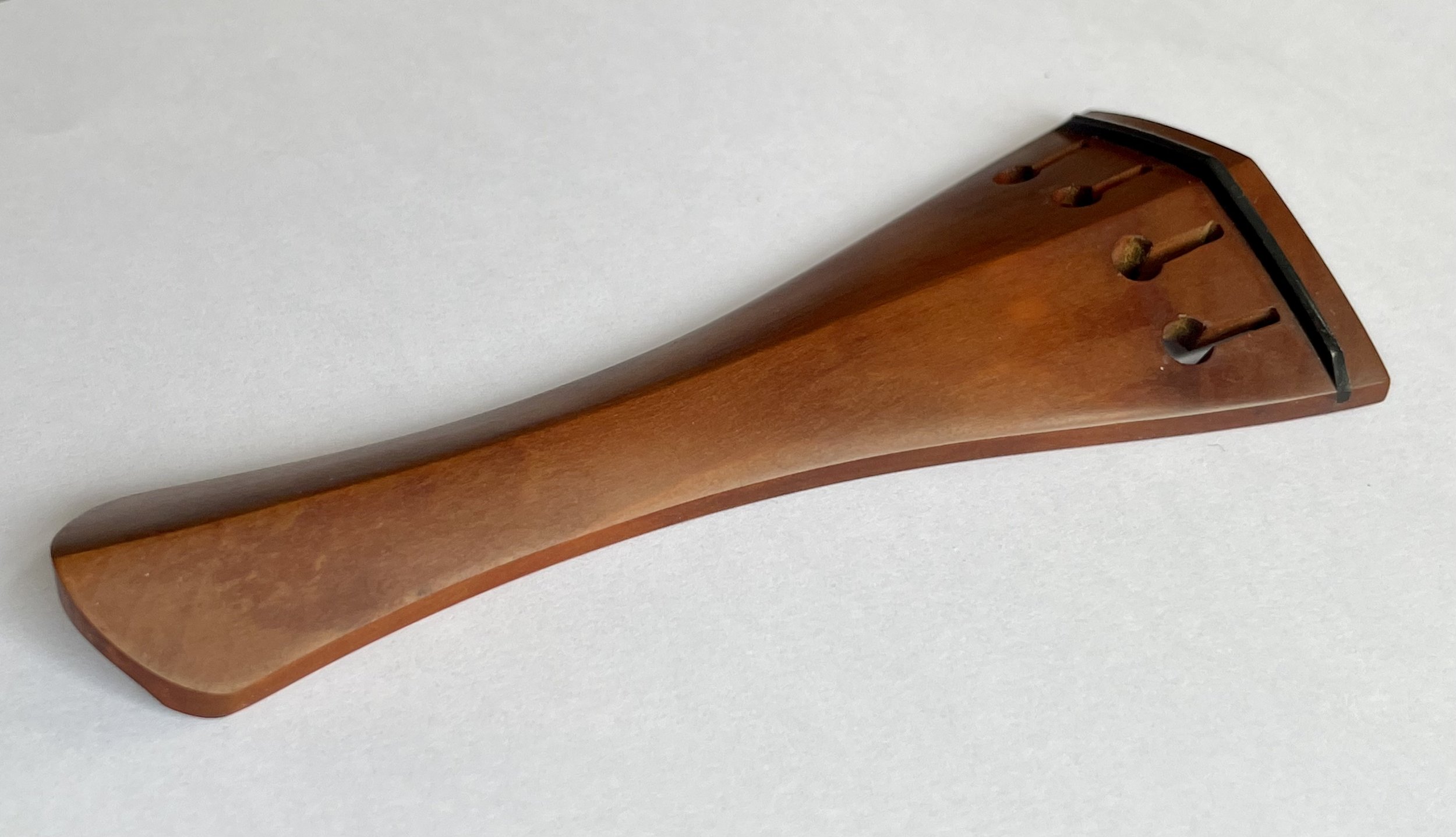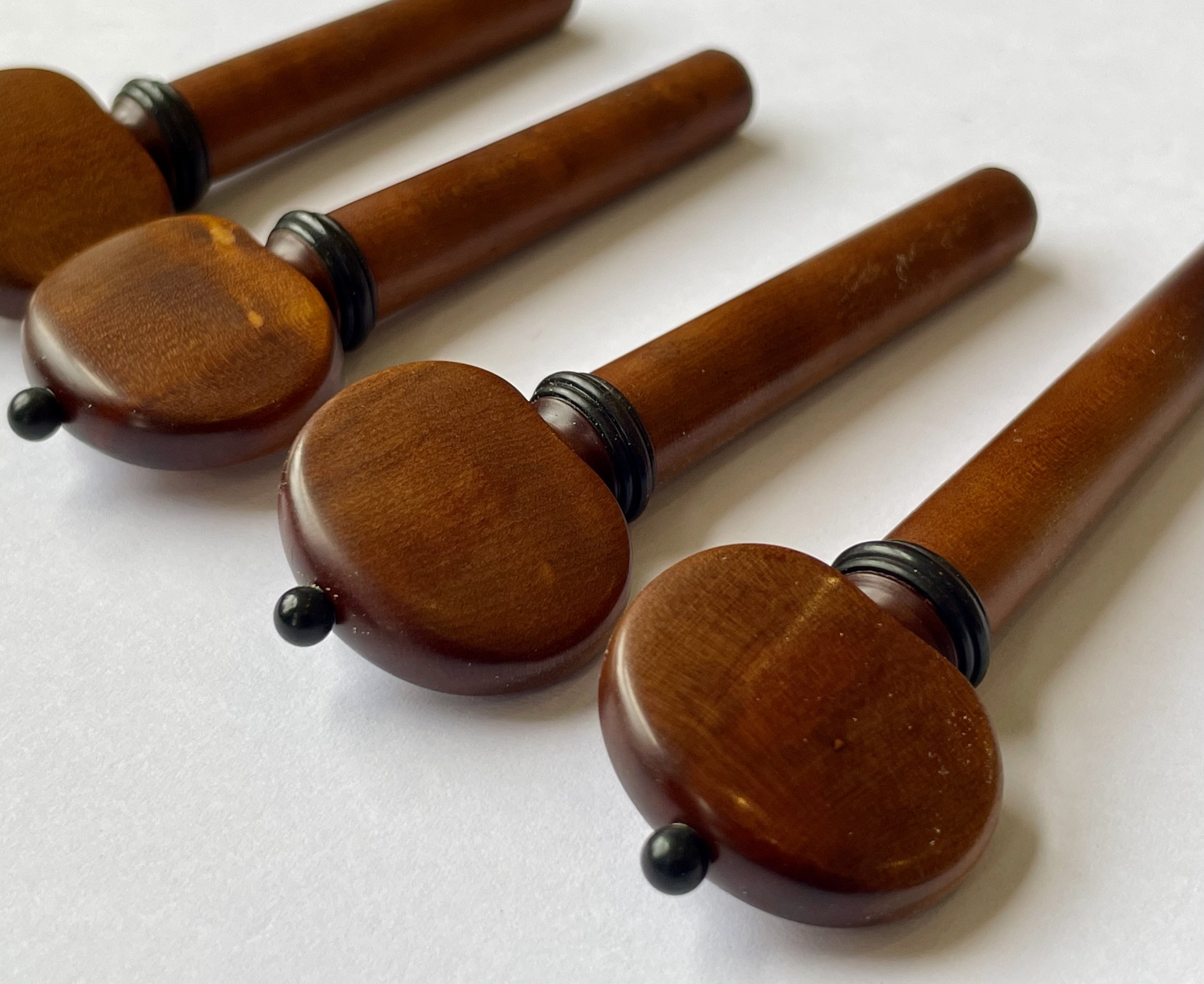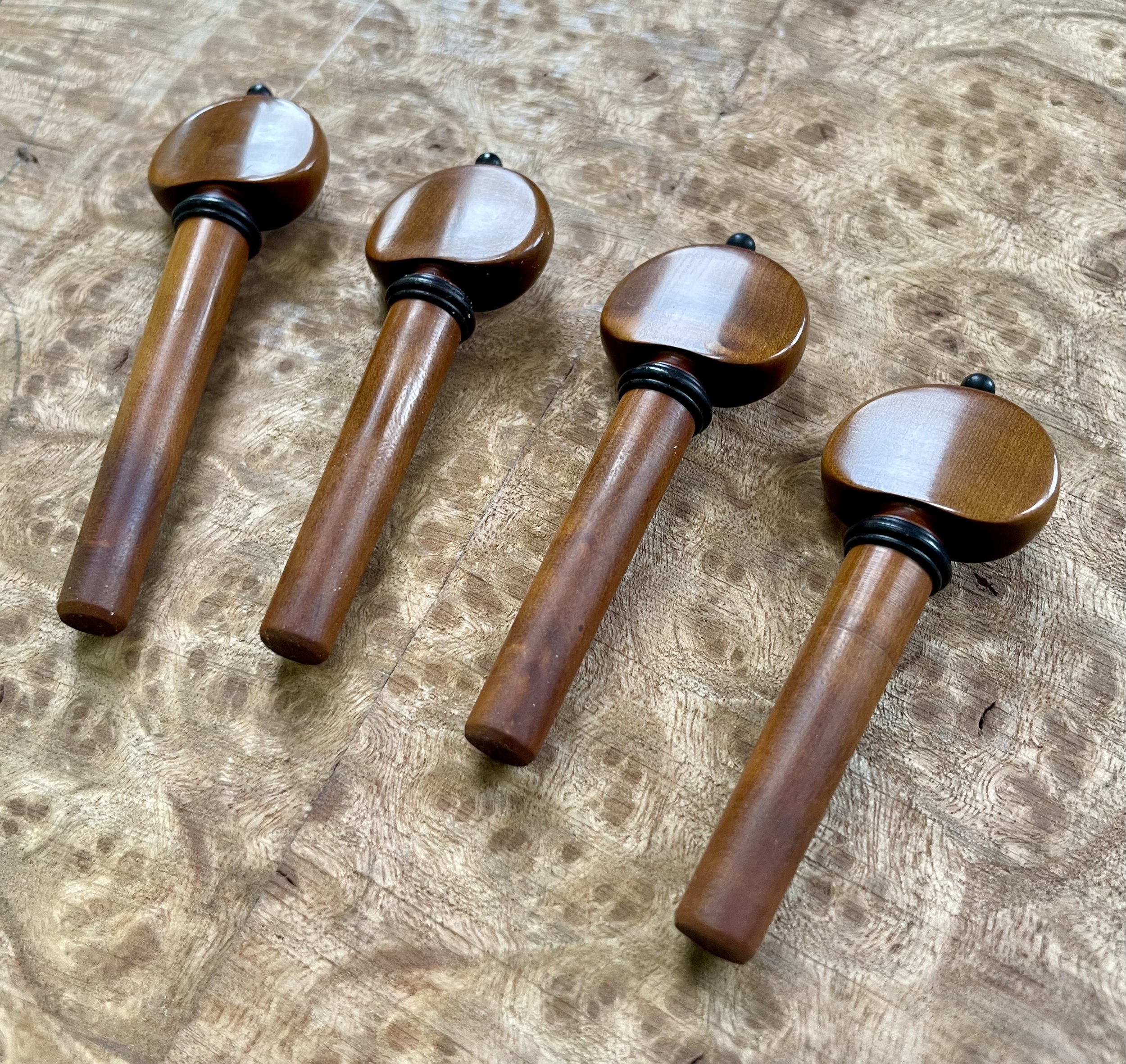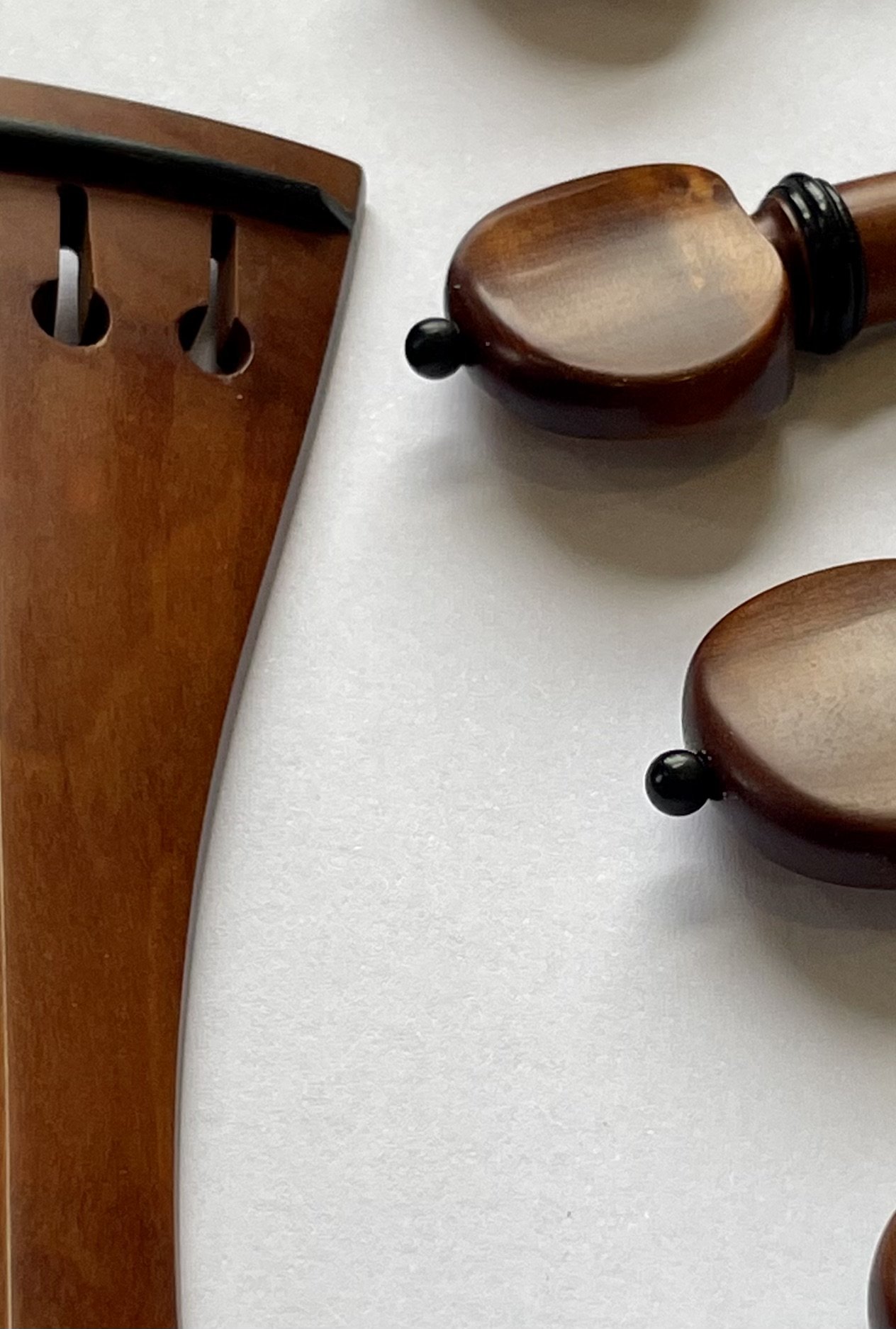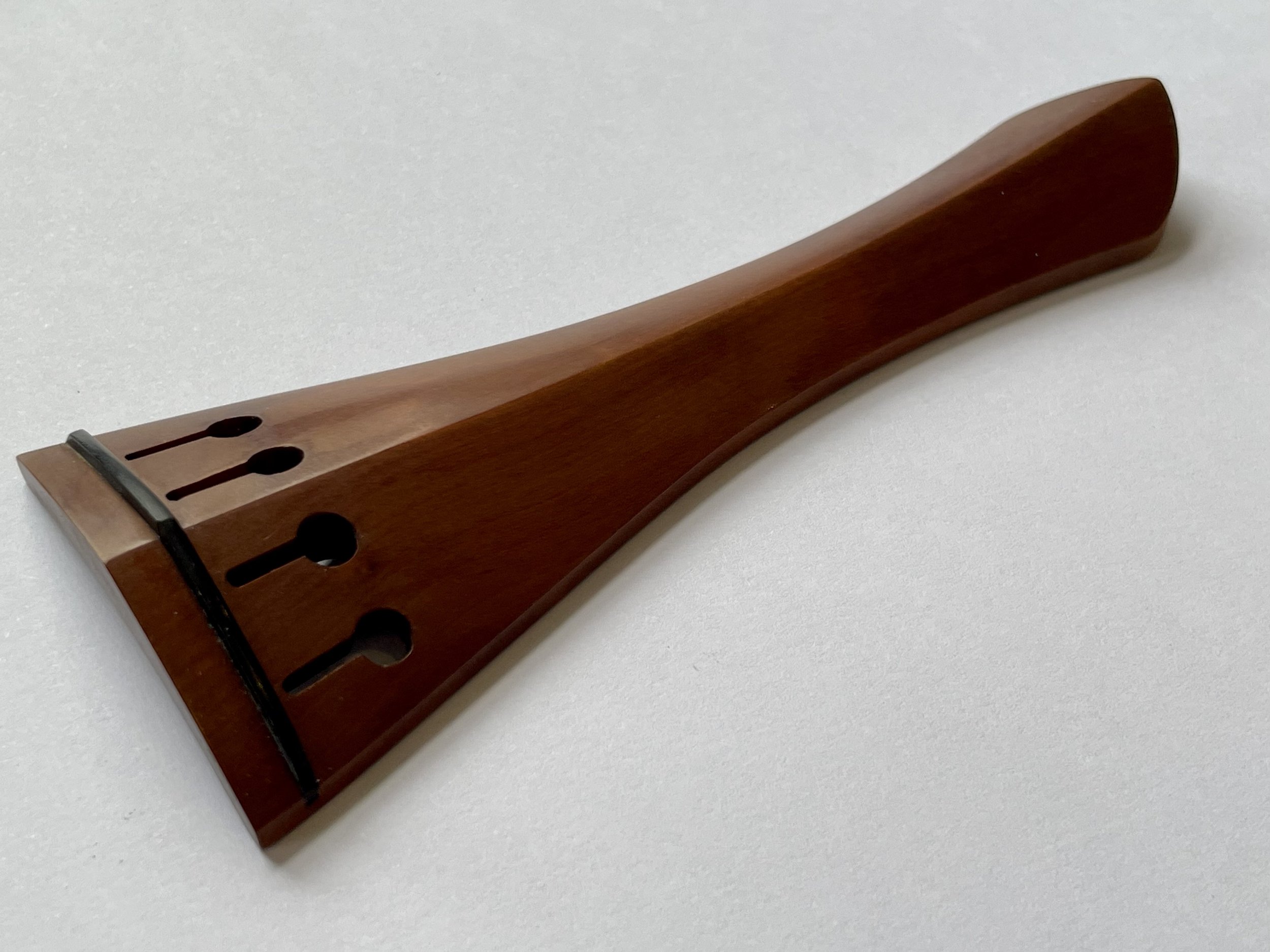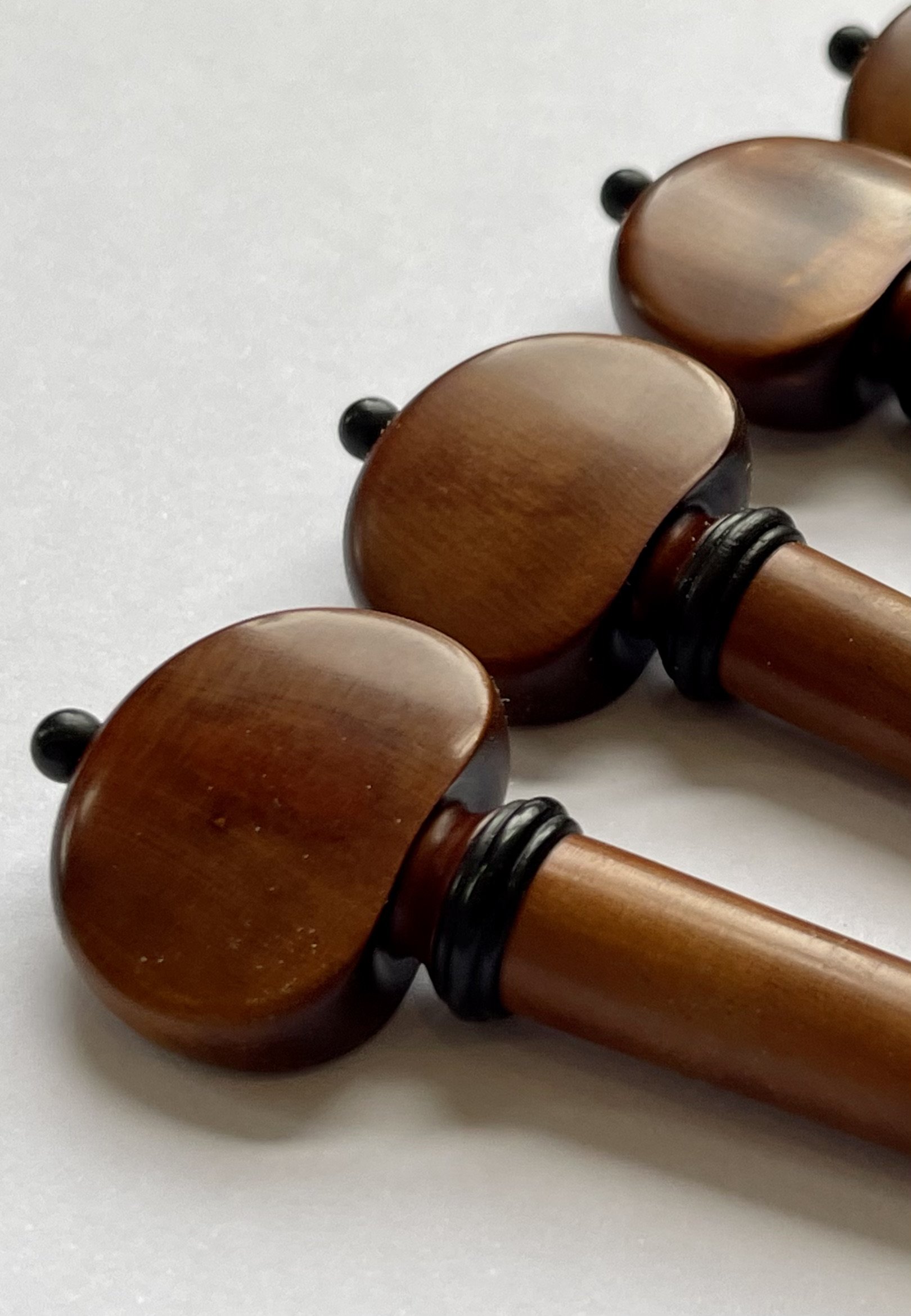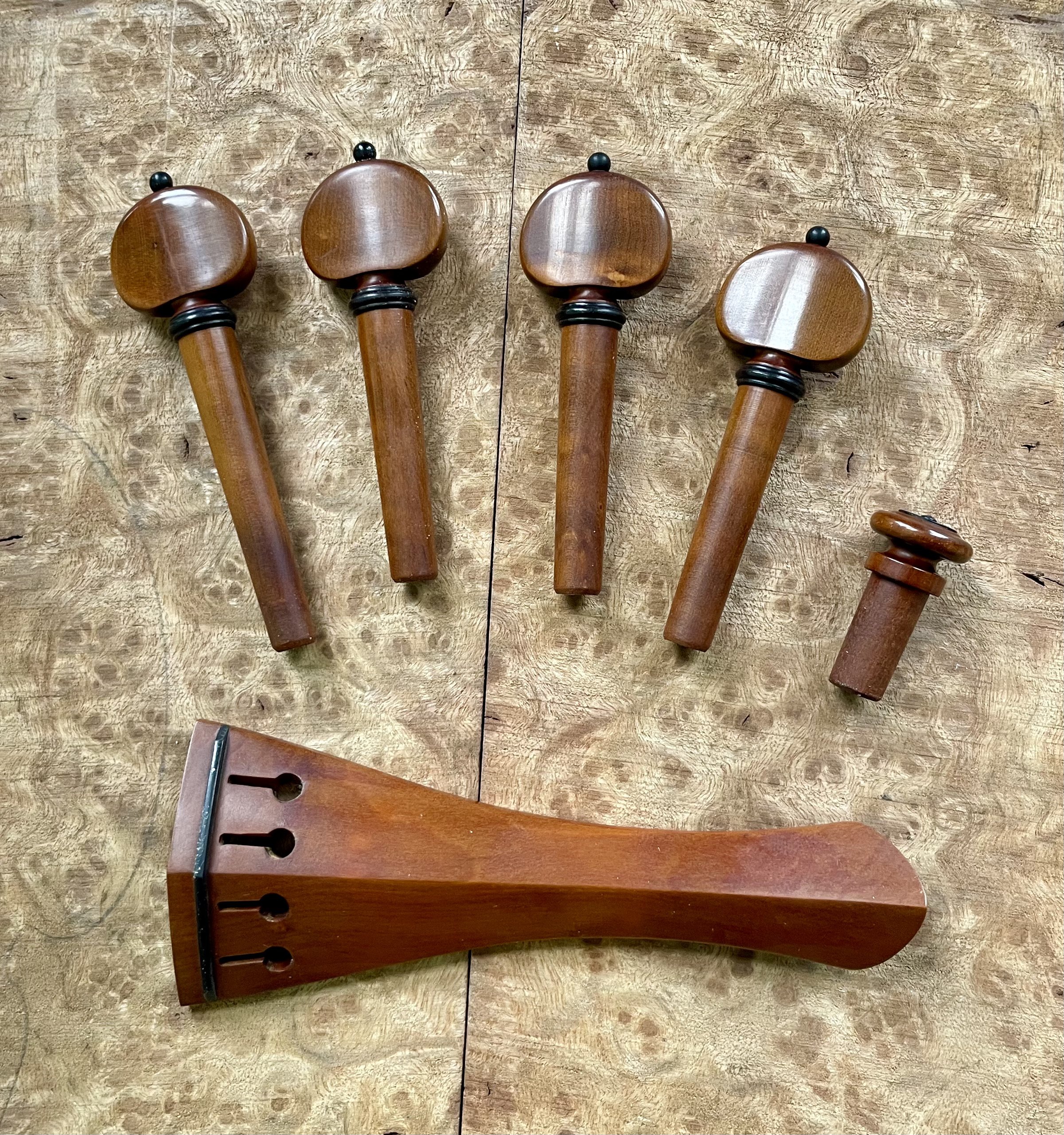Gerald Crowson Instrument Fittings
The world’s greatest maker of pegs, tailpieces, endpins & chinrests for violin, viola & cello.
With the making of a new violin, viola or cello comes the decision of which fittings to use to finish it with. As well as being of the greatest importance to fit them so they function perfectly, there is the question of aesthetics and craftsmanship. There are many makers of fittings in the world, then there are a handful of excellent makers, then there is Gerald Crowson.
From his workshop in Frettenham, Norfolk, Gerald Crowson has been making pegs, tailpieces, endpins and chinrests of the highest order for many decades.
Gerald’s fittings have been the gold standard for all makers, bringing the classic English Hill models into the 21st century. There are many imitations out there but Crowson fittings are as close to the original designs as one can get. Below we can see a beautiful Ferdinando Gagliano violin adorned with Crowson pegs.
Woods used for fittings
Instrument fittings will generally come in three different types of wood; ebony, rosewood & boxwood. Each wood has its benefits and limitations and visually change the appearance of an instrument also.
Ebony, the most dense, is a hardwood that will last the test of time. With a near black appearance it is an incredibly solid, heavy wood. With the right cut that is well seasoned, ebony can be very stable and hard wearing, hence its use for fingerboards, topnuts and saddles on instruments. It’s dark appearance can add contrast to an instrument, especially if it has a lighter colour varnish.
Rosewood, depending on the type, is also a very hardwearing wood with a dark brown/reddish appearance. It can work very well for fittings and is commonly used in guitar making too. Aesthetically it can add an interesting dimension to the overall appearance of an instrument. Due to recent CITES restrictions, it is becoming less common for makers to use rosewood.
Boxwood has been used for many centuries to make fittings for instruments. Its lightweight, consistent nature makes it an excellent choice for violins, violas & cellos. Owing to a lower density, over time the pegs will compress in the pegbox to create a very smooth turning action. The ends of the pegs will also become beautifully burnished like a conker. Its natural colour is a milky white and although it is perfectly usable like this, most makers will stain the boxwood to a beautiful chestnut brown.
Aiming for the very highest standards in all areas at Ruschil & Bailly, finishing our handmade instruments with the best is part of what makes our instruments exceptional. Below are some examples of instruments made in the London workshop finished with Crowson fittings.
New violin from the Ruschil & Bailly workshop, “The Pearl, 2022” will feature this exceptional set of Hill model stained boxwood pegs handmade by Gerald Crowson.
